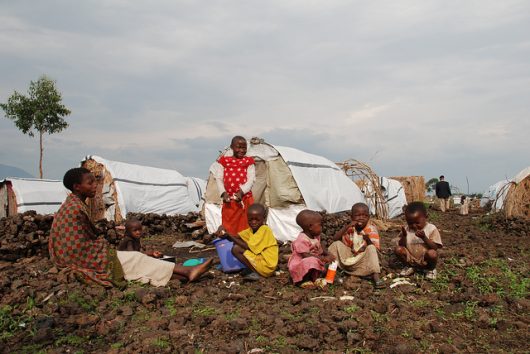Improving Education in the Democratic Republic of the Congo
 Situated in the heart of Africa and home to more than four million people, the Democratic Republic of the Congo has, for many years, struggled to improve its educational system. With an overall literacy rate of approximately 63.8 percent, the nation’s literacy has declined from its 1995 rate of 77.3 percent. Critically, though, education in the Democratic Republic of the Congo has experienced a plateau in literacy around 64 percent after a sudden drop in the 2000s, suggesting that the nation may be heading toward an upward spike in terms of literacy.
Situated in the heart of Africa and home to more than four million people, the Democratic Republic of the Congo has, for many years, struggled to improve its educational system. With an overall literacy rate of approximately 63.8 percent, the nation’s literacy has declined from its 1995 rate of 77.3 percent. Critically, though, education in the Democratic Republic of the Congo has experienced a plateau in literacy around 64 percent after a sudden drop in the 2000s, suggesting that the nation may be heading toward an upward spike in terms of literacy.
Still, however, the gender disparities in the rate of education in the Democratic Republic of the Congo are profound. Where 78.1 percent of the male population is literate, the female population lingers at a staggeringly low 50 percent. Nonetheless, women such as Melissa Kasoke of the Congo have been raising their voice in support of sustained efforts for women’s education. It seems, too, that the world is listening to their demands. In spite of the gender disparity that exists within the educational system in the nation, external organizations such as UNICEF have begun funding efforts to deconstruct barriers to women’s education and provide equal opportunities for them within the Congo.
In recent years, such external efforts have proven conducive to improving the overarching schema of education in the Congo. As of 2015, over 20 million textbooks had been distributed to classrooms throughout the country. The completion rate at the primary school level now stands at approximately 70 percent, as opposed to the 2002 rate of only 29 percent. Teaching strategies have been implemented, which encourage gender equality, discovery-based-learning and instructive materials.
In fact, the Democratic Republic of the Congo recently received a $100 million grant to help improve their education system. This grant seeks to improve the quality of primary education, strengthen sector management and promote greater accountability at the local level. Ultimately, this should help to improve the education system for both men and women throughout the nation, particularly in communities where low-income students have experienced a dearth of resources in the past.
The structure of the education system in the Congo overall parallels that of the U.S., to some extent. The first six years of education are encapsulated in primary school, the second four years are spent in middle school and the final three years are spent in lycee, which is similar to high school in the U.S. Finally, students have the opportunity to attend college or university in the tertiary portion of their educational pursuits.
Overall, education in the Democratic Republic of the Congo continues to strive toward improvement and success. However, the nation is still in need of assistance. It is therefore incumbent for foreign countries, such as the U.S., to continue to provide aid to the Democratic Republic of the Congo in order to ensure universal educational opportunities for students of all ages, genders nd socioeconomic class backgrounds.
-Emily Chazen
Photo: Flickr
